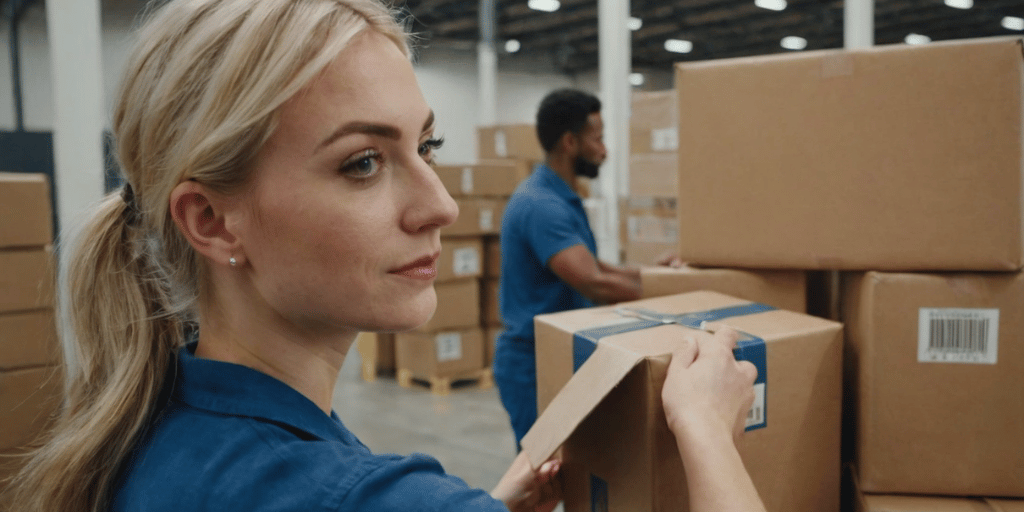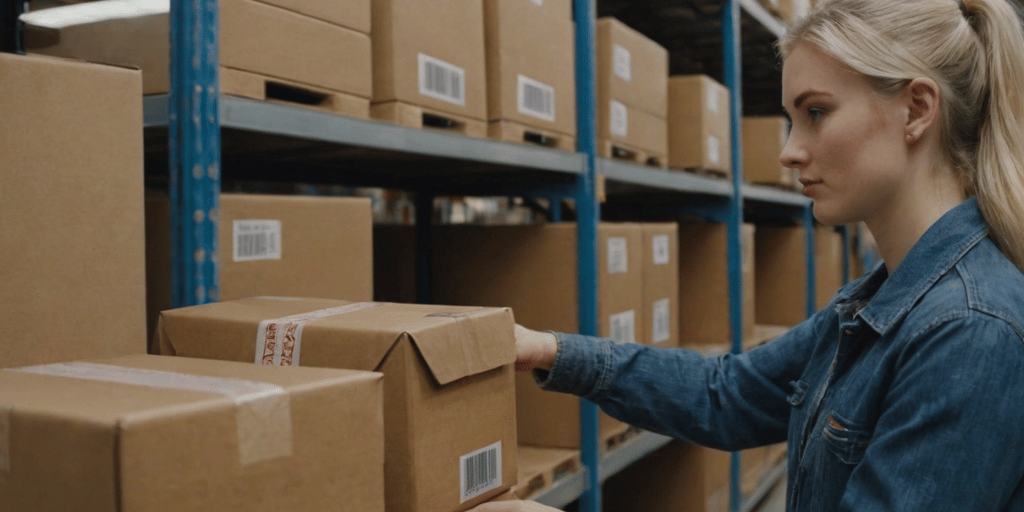“Departed FedEx Hub” means your package left a main FedEx sorting center and is now heading toward the next stop. This move happens inside a big system that moves packages fast and smooth. Imagine a giant spider web with many paths, each package finds the quickest route. People rely on FedEx hubs to keep deliveries on track and beat delays. One time, a package I tracked zoomed through three hubs in just 24 hours, showing how crazy fast this network can work. If you want to know how your package stays on the move and why it sometimes feels like magic, hang tight—it’s all about timing, speed, and smart travel. Keep reading to discover how your stuff gets from point A to point B without a hitch.
Packages often pass through multiple hubs to optimize delivery times, which may sometimes appear as route deviations. Monitoring your tracking status provides real-time updates, especially crucial during peak seasons or severe weather.
Understanding the entire journey of your package offers a clearer picture of the delivery process.
Key Takeaways
- ‘Departed FedEx Hub’ means the package has left a central FedEx sorting facility.
- Packages often pass through multiple hubs to optimize delivery times and routes.
- Monitoring tracking status provides real-time updates, especially during peak seasons or severe weather.
- Understanding your package’s journey offers clearer insight into the delivery process.

What Does the Departed FedEx Hub Mean?
When a FedEx tracking status shows ‘Departed FedEx Hub,’ it means the package has left a FedEx sorting facility and is on its way to the next destination. This status is crucial in the tracking process, offering real-time updates about the shipment’s journey.
The term ‘departed’ indicates that the package has successfully gone through a FedEx hub—a central sorting center designed to streamline parcel distribution and delivery.
These hubs are vital to FedEx’s logistics network, ensuring efficient sorting and correct routing to the next location.
For international shipments, ‘Departed FedEx Hub’ might mean the package has exited a major sorting facility in either the origin or destination country, moving to its next significant checkpoint.
For domestic shipments, this status is similar to ‘Departed FedEx Location,’ indicating progress within the same country.
Packages often pass through multiple hubs, with each departure enhancing the accuracy and efficiency of the delivery route.
Tracking updates at each stage, from arrival scans to final delivery, provide transparency and assurance, allowing recipients to closely monitor their packages and plan accordingly.
What happens after my package departs a FedEx hub?
Once your package departs a FedEx hub, it heads to the next logistical point. This might be another sorting facility or the final delivery destination. This stage is crucial for ensuring your package moves smoothly through FedEx’s logistics network.
The package gets scanned at various checkpoints during transit, providing updates like ‘Arrived at FedEx Location’ or ‘In Transit’. These scans help you track your package accurately.
For international shipments, ‘Departed FedEx Hub’ can mean the package has left the origin or transit country and is on its way to the destination country. Packages might face delays due to customs, weather, or other logistical challenges.
Despite potential setbacks, your package keeps moving through FedEx’s extensive network until it reaches a facility near your delivery address.
You can monitor your package’s status using FedEx’s tracking tools. If it stays in the same status for a long time, contact FedEx customer service.
Why Does My Package Go to Multiple FedEx Hubs?

Your package moves through multiple FedEx hubs to optimize delivery efficiency and speed. FedEx uses a hub-and-spoke model, where central hubs consolidate shipments, streamline routes, and manage high volumes. This system ensures accurate shipment updates and efficient routing.
Each hub acts as a sorting center, determining the next step based on the package’s destination.
For example, a package traveling from Los Angeles to New York might pass through several hubs to minimize transit times. Geographical optimization helps cover long distances quickly.
Using multiple hubs also balances network load, preventing any single hub from becoming overwhelmed. This is crucial during peak shipping periods. It also provides flexibility, allowing FedEx to adapt to disruptions like weather events or mechanical issues.
The strategic use of multiple hubs ensures reliability, efficiency, and timely deliveries across FedEx’s network.
Why is my package going farther away from my location?
Your package might be moving farther away from your location due to several logistical strategies and operational necessities employed by FedEx to ensure timely and efficient deliveries.
FedEx routes packages through multiple sorting centers and hubs to optimize the delivery network. Even if this means a temporary detour, it helps streamline the process.
Advanced algorithms determine the most efficient path, sometimes requiring a package to move away from its final destination to consolidate shipments.
Sorting facility capacity constraints can also lead to rerouting packages to less congested hubs, maintaining network efficiency and preventing bottlenecks.
Adverse weather conditions, transportation issues, and human errors in sorting might also cause unexpected routes.
Incorrect address information or regulatory compliance in international shipments can make packages appear to move away from their final destination. Despite these detours, these routing strategies generally ensure packages arrive within the expected timeframe.
How does FedEx decide which hubs to route packages through?

FedEx routes packages through hubs using a mix of logistical strategies, tech tools, and operational efficiencies. Central to their method is the hub-and-spoke model, where key distribution centers act as intermediaries before packages reach their final destinations.
This system allows for efficient consolidation and distribution, optimizing the entire delivery network.
Geographical optimization ensures hubs are strategically placed to cover large areas effectively. Packages may pass through multiple hubs, even if this increases their distance from the final destination temporarily.
Sophisticated route optimization algorithms refine these paths, considering factors like distance, traffic, and delivery density.
Capacity and load balancing prevent any single hub from becoming overwhelmed, especially during peak periods.
For international shipments, specific hubs handle customs and regulatory requirements to ensure compliance and smooth transitions across borders.
Technological advancements like optical scanners, barcode readers, and real-time tracking systems enhance decision-making. These tools let FedEx monitor package movements closely, making informed routing decisions.
Customer demand and service levels, along with environmental and physical factors, influence these routing strategies, ensuring timely and cost-effective deliveries even if the route deviates from the expected path.
For example, during the holiday season, FedEx might reroute packages through less congested hubs to avoid delays, ensuring timely delivery despite increased demand.
What Should I Do If My Tracking Is Stuck on Departed FedEx Hub?

If your FedEx tracking status shows ‘Departed FedEx Hub’ for an extended period, follow these steps to address and potentially resolve the situation:
- Wait for Updates: Packages in transit might not get scanned for over 24 hours. This lack of scanning doesn’t necessarily indicate an issue.
- Check for Common Causes: Delays can be due to customs for international shipments, weather interruptions, or technical issues. Assess if any of these factors apply.
- Contact FedEx Customer Service: If the status remains unchanged, reach out to FedEx at 1.800.GoFedEx (1.800.463.3339). Provide your tracking number and details for investigation.
- Use Online Tools: FedEx’s online tracking tools and mobile app can offer real-time updates and notifications. Additionally, FedEx Delivery Manager allows you to redirect or hold packages at a FedEx location.
- Check for Service Alerts: Visit the FedEx Service Alerts page for any known disruptions affecting your shipment’s route.
- File a Claim if Necessary: If the package is past the delivery date, contact the sender to file a claim with FedEx.
How Accurate Is the Expected Delivery Date on FedEx Tracking?
The expected delivery date on FedEx tracking can vary in accuracy, influenced by the type of service, external conditions, and operational efficiency. FedEx estimates use historical data and current conditions but can change due to unforeseen events.
Service type significantly impacts delivery accuracy. FedEx Express offers more precise delivery windows due to its premium nature and guaranteed times.
In contrast, FedEx Ground is less predictable, especially over long distances or during peak periods.
External factors like severe weather and customs delays for international shipments can affect delivery dates. Operational issues, including capacity constraints during high-volume seasons and routing changes, also play a role.
User experiences with FedEx tracking are mixed. Some report high accuracy, while others face delays and frequent changes in the estimated delivery dates, leading to frustration.
To manage expectations, monitor the tracking status regularly for real-time updates. Contact FedEx customer service if you encounter significant delays or frequent changes.
Proactive communication can provide detailed information and potential solutions.
Frequently Asked Questions
How Can I Contact Fedex Customer Service for More Information?
To contact FedEx customer service, call 1-800-463-3339, use the live chat feature on their website, or visit a local FedEx office. These options provide quick and detailed assistance.
Can I Change the Delivery Address After the Package Has Departed the Hub?
Yes, you can change the delivery address after the package has left the hub. Contact FedEx customer service quickly to request the change. Extra fees and potential delivery delays might apply, depending on the situation.
What Should I Do if My Package Is Damaged When It Arrives?
If your package arrives damaged, take immediate action. First, document the damage with photos. Keep all packaging materials intact. Contact the FedEx team to file a claim. Notify the sender to discuss replacement or refund options. This ensures you have all evidence and maximize your chances of resolving the issue efficiently.
Conclusion
‘Departed FedEx Hub’ means your package has left a central sorting facility and is on its way to the next stop in transit. FedEx uses multiple hubs to streamline logistics, even if the route looks odd. These routes are chosen based on complex algorithms designed to ensure prompt delivery.
If your tracking status doesn’t update, contact customer service for help. Delivery dates are usually accurate but can be affected by weather or operational issues.

